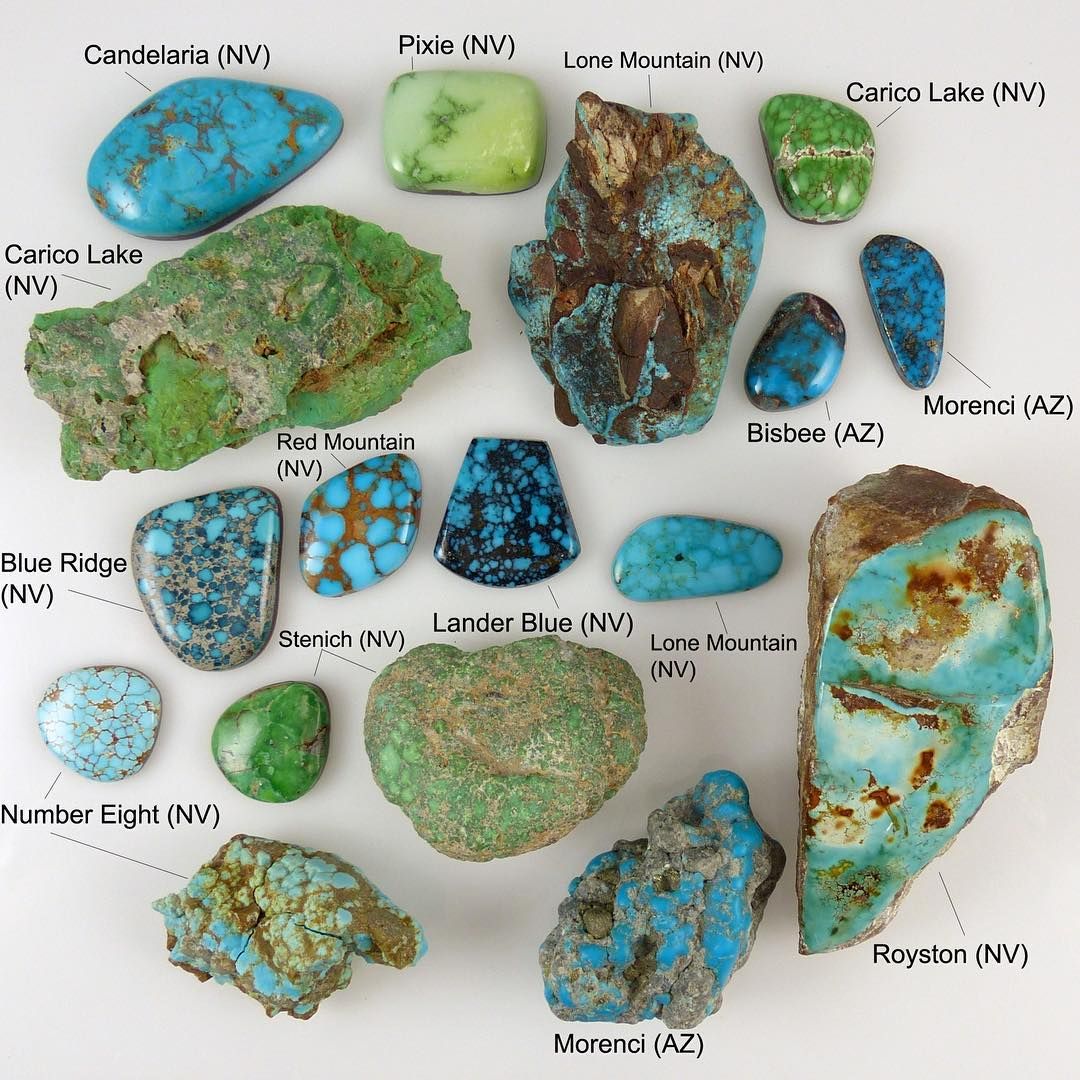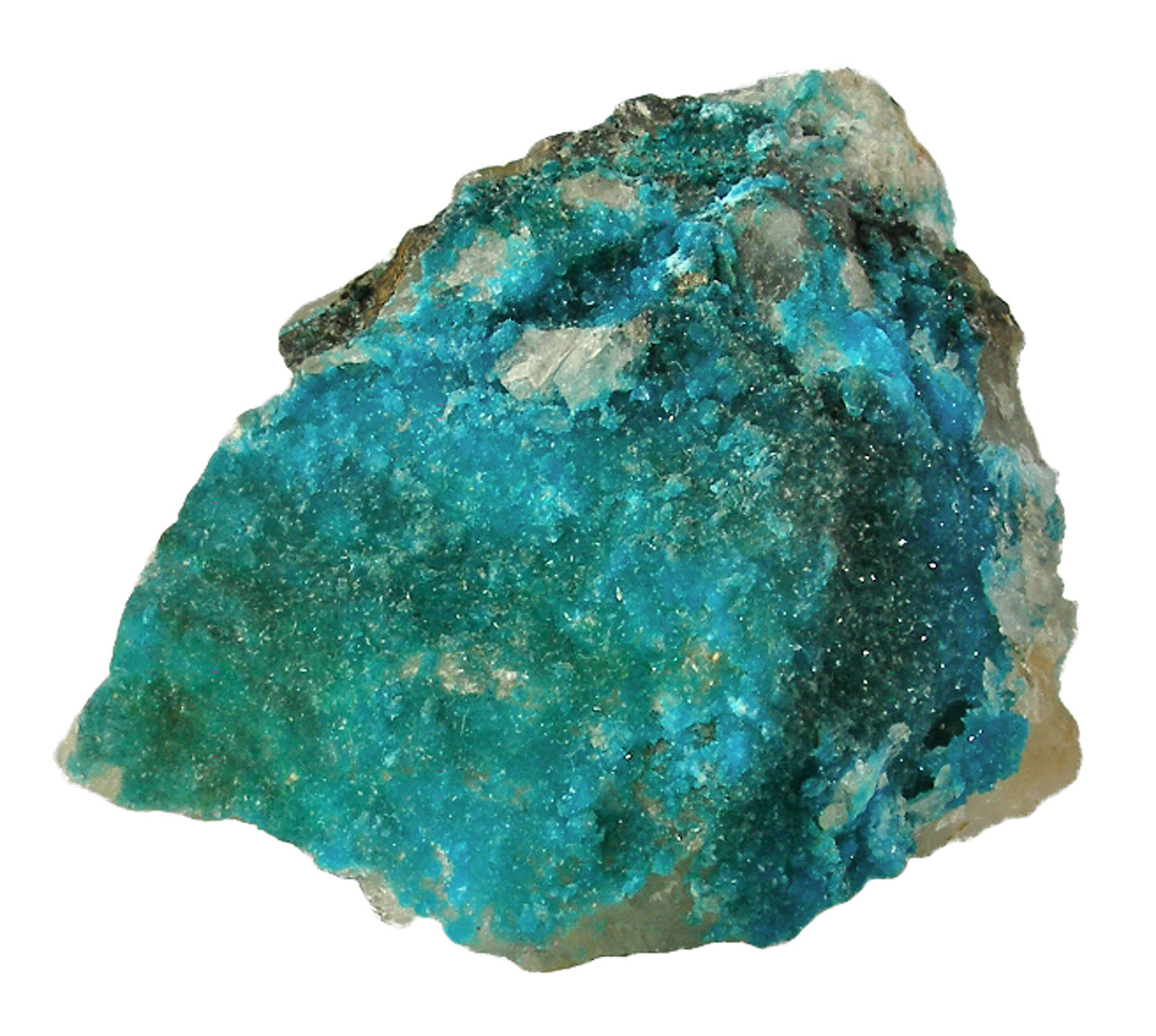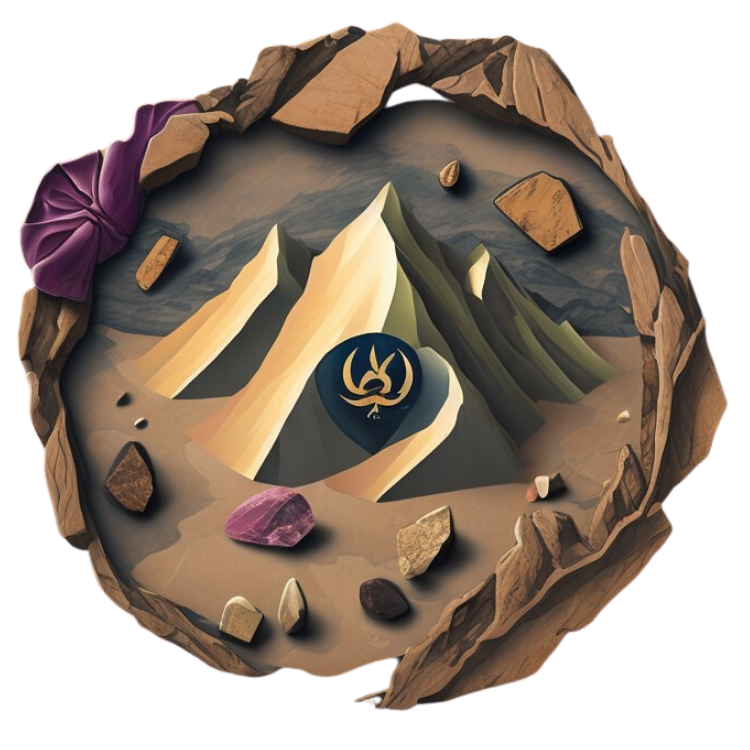Turquoise Gemstone Guide: Types, Colors, and How to Identify This Stunning Blue-Green Stone

Turquoise is one of the world's most beloved gemstones. Its dreamy blue-green hues have been admired for thousands of years, from ancient pharaohs in Egypt to Native American artisans in the American Southwest. Today, turquoise is still cherished for its unique beauty, rich history, and wide variety of gemstone types and colors.
But what exactly is turquoise? Is it a gem or a rock? Where does it come from, and how can you tell if it's real? Whether you're a seasoned collector, a curious rockhound, or someone simply enchanted by turquoise-colored stones, this guide will tell you everything you need to know.
What Is Turquoise?
Turquoise is a gemstone, but more specifically, it's a mineral made of hydrated phosphate of copper and aluminum. It forms over long periods of time when water interacts with rocks that contain these elements. The result is a striking, opaque stone that ranges in color from sky blue to greenish-blue to even yellowish-green.
So, yes—turquoise is a gem. It has been used in jewelry and decorative objects for millennia and is still one of the most sought-after colored gemstones in the world. In the mineral world, turquoise is relatively soft, with a rating of 5 to 6 on the Mohs hardness scale. This makes it more delicate than other popular gemstones like diamonds or sapphires.
When people ask, "What stone is turquoise?", the answer is simple: it's a gemstone and a mineral in its own right, not a variety of another stone. Turquoise is known for its distinctive look, often featuring dark veins or web-like patterns known as a matrix.
The Origins of Turquoise: Where It Comes From
Turquoise has been mined for over 5,000 years, and its history is as colorful as the stone itself. Ancient civilizations in Egypt, Persia (modern-day Iran), and Mesoamerica prized turquoise for its beauty and believed it had protective and spiritual powers.
Today, turquoise is mined in several countries around the world, including:
- United States: Arizona, Nevada, and New Mexico are some of the most famous sources. The American Southwest is known for producing a variety of turquoise types with different hues and matrix patterns.
- Iran: Known for producing high-quality turquoise with a vivid sky-blue color and minimal veining.
- China: A major producer of turquoise, often characterized by its greenish-blue tones.
- Egypt: Home to some of the oldest turquoise mines in the world, dating back to ancient times.
Each location produces turquoise with unique qualities, which brings us to the different types of turquoise gemstones.
Types of Turquoise Gemstones

There are many types of turquoise, often named after the mine where they are found. These types vary in color, pattern, and rarity.
One of the most famous American varieties is Sleeping Beauty Turquoise, mined in Globe, Arizona. It's prized for its pure sky-blue color and lack of matrix, giving it a smooth, clean look.
Kingman Turquoise, also from Arizona, often features beautiful blue tones with dark, contrasting matrix patterns.
Morenci Turquoise, from southeastern Arizona, is known for its rich color and pyrite inclusions that give it a sparkly appearance.
Persian Turquoise, from Iran, is valued worldwide for its vibrant color and smooth texture with minimal matrix.
Tibetan and Chinese Turquoise often have a greenish-blue tint and more noticeable veining, which some collectors find appealing.
With so many options, it's no surprise that collectors often specialize in one type or enjoy hunting for unique pieces with unusual turquoise gemstone colors.
General Information About Turquoise
Turquoise is one of the most loved and instantly recognizable gemstones in the world. But what is it, really? Below is a breakdown of its general classification, what it looks like under light, how it behaves physically, what it's made of, and how it forms deep in the Earth.
Classification of Turquoise
Turquoise is classified as a phosphate mineral, which means it belongs to a group of minerals that contain the phosphate ion (PO₄³⁻). It's also considered a secondary mineral, meaning it forms from other materials rather than directly from molten rock.
Turquoise is not a crystal-clear gemstone like sapphire or diamond. Instead, it falls under the category of opaque gemstones, which don't let light pass through. Even though it doesn't sparkle like traditional gems, its intense color and unique patterns make it incredibly valuable and visually appealing.
- Mineral Class: Phosphate
- Group: Turquoise group (includes minerals with similar chemical compositions)
- Category: Semi-precious gemstone
Optical Properties
Turquoise might not be transparent, but it still has some interesting optical characteristics:
- Luster: Turquoise has a waxy to dull luster, though some higher-quality stones can appear slightly glassy (vitreous) when polished.
- Transparency: Always opaque, even in the best quality stones.
- Refractive Index: Between 1.61 and 1.65. This number measures how much light bends as it enters the stone—important for transparent stones, but less relevant for opaque ones like turquoise.
- Birefringence: Weak (0.040) — this is a measure of double refraction, where a ray of light splits into two paths inside a crystal. Again, more useful for see-through gems, but it's still part of turquoise's identity.
- Pleochroism: None. This means it doesn't show different colors when viewed from different angles—its turquoise hue remains steady from all sides.
- Color Zoning: Turquoise generally shows even color distribution, though natural patterns or matrix veins (from the host rock) may be visible.
Characteristic Physical Properties
Turquoise may look soft and dreamy, but it has physical traits that help experts identify and evaluate it. Here's how turquoise behaves in the real world:
- Hardness: 5 to 6 on the Mohs scale. This means it's harder than a fingernail but softer than quartz. It can be scratched by many everyday objects, so turquoise jewelry needs some care.
- Specific Gravity: 2.6 to 2.9. This refers to how heavy it feels for its size. Turquoise has a moderate density—not too light, not too heavy.
- Fracture: Conchoidal to uneven. When broken, it doesn't split cleanly but instead has a jagged or curved break.
- Tenacity: Brittle. It can chip or break if hit hard.
- Stability: Sensitive to heat, chemicals, and prolonged sunlight. That's why many turquoise stones are stabilized or treated to preserve their beauty over time.
Chemistry
Turquoise is a hydrated phosphate of copper and aluminum. That's a fancy way of saying it's made of copper and aluminum bonded with water and phosphate.
Here's the basic chemical formula:
CuAl₆(PO₄)₄(OH)₈·4H₂O
Let's break that down:
- Cu = Copper: This is what gives turquoise its famous blue color.
- Al = Aluminum: Also part of its structure.
- PO₄ = Phosphate: The key component that places turquoise in the phosphate mineral group.
- OH = Hydroxide and H₂O = Water: This is what makes it a hydrated mineral.
Variations in its composition—especially the presence of iron or zinc—can affect the stone's color. For example:
- More copper gives turquoise a rich blue hue.
- More iron leads to a greenish tone.
- More zinc may result in yellowish-green or apple-green colors.
This natural variation explains the wide range of turquoise gemstone colors seen around the world.
Crystallography
Turquoise is a triclinic mineral, meaning it forms crystals in a very unsymmetrical shape. In fact, it almost never forms visible crystals at all. Most turquoise is found as massive, botryoidal (grape-like), or vein-like structures in rocks.
Here's a closer look:
- Crystal System: Triclinic (the least symmetrical of the crystal systems)
- Crystal Habit: Typically cryptocrystalline—this means its crystals are so tiny that they can only be seen under a microscope.
- Formation: Turquoise forms in arid, dry regions when acidic water slowly interacts with rocks containing copper, aluminum, and phosphorus. This process can take thousands or even millions of years.
Some of the most prized turquoise specimens form in nodules (rounded lumps) or as veins cutting through host rocks like sandstone, shale, or limestone.
Turquoise Gemstone Colors and What They Mean

Turquoise isn't just one shade. In fact, turquoise gemstone colors can range from pale sky blue to greenish-blue, apple green, and even teal. The color is influenced by the amount of copper and iron in the stone. Copper-rich stones tend to be bluer, while iron-rich stones lean toward green.
Here are some general color categories:
- Sky Blue: Often considered the most desirable, especially in Persian and Sleeping Beauty turquoise.
- Greenish-Blue: Common in Chinese and Tibetan turquoise. Some find these colors earthy and spiritual.
- Apple Green: Rare and usually found in older deposits.
- Yellowish-Green or Teal: These stones are less common and often attract collectors who like unique shades.
No matter the hue, turquoise-colored gemstones have a calming, natural beauty that feels both grounded and exotic.
How to Identify Real Turquoise
Unfortunately, because turquoise is so popular, it's also frequently imitated. Common substitutes include dyed howlite and magnesite, which look similar but don't have the same value or properties.
Here are a few tips to help you identify genuine turquoise:
- Hardness: Real turquoise is relatively soft (5–6 on the Mohs scale). If a stone scratches too easily, it might be a fake.
- Matrix Pattern: Natural turquoise often has veins or spiderweb-like lines. These are real indicators of authenticity.
- Color Consistency: Genuine turquoise usually has some natural variation in color. If it looks too perfect or evenly dyed, it might not be real.
- Price: If a deal seems too good to be true, it probably is. High-quality turquoise can be expensive.
For serious collectors or buyers, consider getting the stone tested by a gemologist or buying from reputable dealers.
Turquoise in Jewelry and Lapidary Work
Turquoise has been used in jewelry for centuries. It is often cut into cabochons (smooth, domed shapes), beads, or inlaid into silver. In Native American jewelry, especially Navajo and Zuni pieces, turquoise plays a starring role.
Because it is relatively soft, turquoise needs to be handled with care. It should be kept away from chemicals, lotions, and excessive moisture, which can damage its surface or alter its color over time.
The stone is also used in carvings, belt buckles, bolo ties, and other decorative pieces. Its versatility and striking appearance make it a favorite among both jewelers and collectors.
Where to Legally Find Turquoise: Rockhounding Sites
If you love turquoise and want to find it yourself, you're in luck. There are several legal rockhounding and pay-to-dig sites in the United States where you can hunt for turquoise.
Please always bring appropriate attire and do research before venturing out to rock hunt and crystal hunt. Also, be sure to verify that the location you want to hunt at is available for public access. Rockhounding.org does our best to verify, but it is your responsibility to verify as well because sometimes things change. We are not liable for any actions you take from the information you find on this site.
Arizona is one of the best places to search. The Bisbee and Kingman areas have historical significance and have produced high-quality turquoise for decades. Some mines allow public access or offer guided tours.
Nevada is another turquoise hotspot. The Royston and Tonopah areas are home to famous mines, and several operations allow tourists and hobbyists to dig for a fee.
New Mexico, particularly around Cerrillos and Albuquerque, has a long turquoise mining tradition. While many mines are closed to the public, some rockhounding clubs and events offer access.
Always check for legal access and follow ethical rockhounding practices. Bring the right tools, get permission, and leave the environment as you found it.
Caring for Turquoise
Turquoise is a porous stone, which means it can absorb oils, lotions, and other substances. This can change its color or damage its surface over time. Here are a few tips to care for your turquoise gems:
- Avoid Chemicals: Take off turquoise jewelry before swimming, cleaning, or applying beauty products.
- Store Carefully: Keep pieces in a soft pouch or separate compartment to avoid scratches.
- Clean Gently: Use a soft, dry cloth. Avoid using water, soap, or ultrasonic cleaners.
With the right care, turquoise can last a lifetime and maintain its vibrant appearance.
Frequently Asked Questions
1. Is turquoise a rare gemstone?
+It depends on the variety and source. Some types, like Sleeping Beauty or Persian turquoise, are becoming rarer due to mine closures. Unique colors or patterns can also increase value and rarity.
2. What is the spiritual meaning of turquoise?
+Many cultures believe turquoise brings protection, healing, and good luck. It's often associated with communication, clarity, and emotional balance.
3. How do you tell real turquoise from fake?
+Check for natural matrix patterns, variations in color, and consult a gemologist if in doubt. Avoid overly bright or perfectly uniform stones, which are often dyed imitations.
4. What are the different turquoise gemstone colors?
+Sky blue, greenish-blue, apple green, teal, and even yellowish-green. The color depends on the mineral content of the stone.
5. Is turquoise valuable?
+Yes. High-quality turquoise can be quite valuable, especially rare types with vivid color and minimal veining.
Conclusion: Why Turquoise Belongs in Every Rockhound's Collection
Turquoise isn't just a pretty stone—it's a piece of history, geology, and culture all rolled into one. Its stunning color palette, diverse varieties, and rich heritage make it a favorite for jewelers, collectors, and rockhounds alike.
Whether you're admiring a piece of handcrafted jewelry or digging in the dirt for your own turquoise gems, there's something magical about this gemstone. With a little knowledge and appreciation, turquoise can become a vibrant part of your rockhounding journey.
Ready to start hunting for turquoise-colored stones? Explore our guide to public gem mining sites and plan your next adventure!
